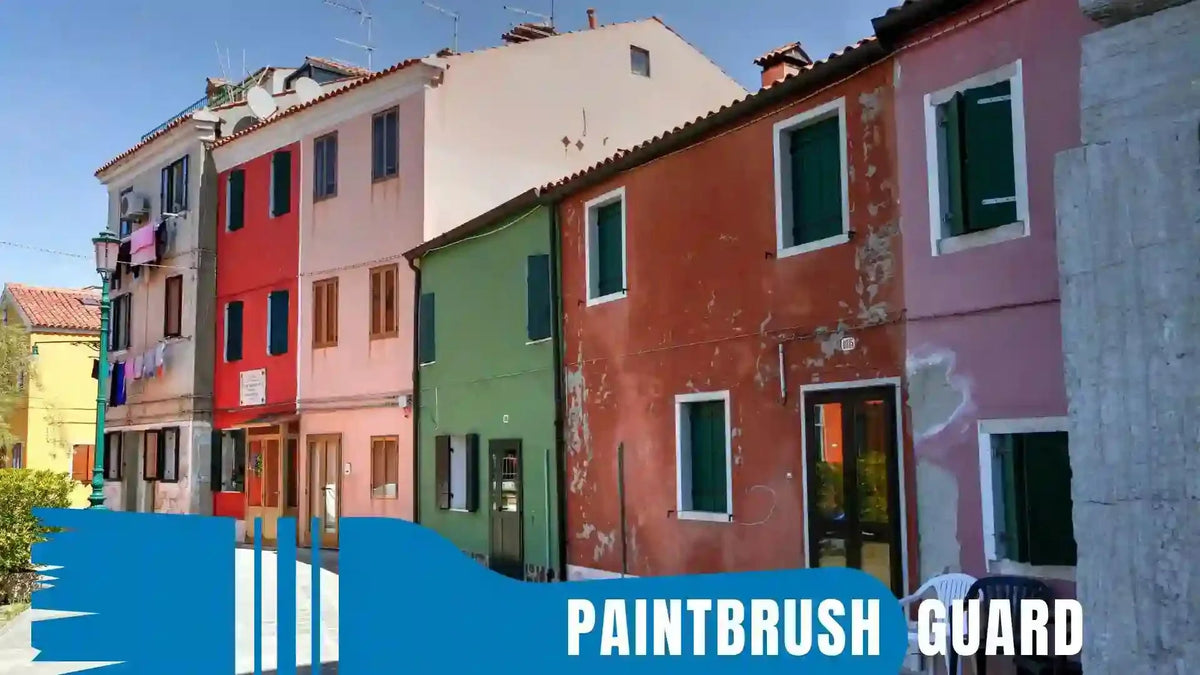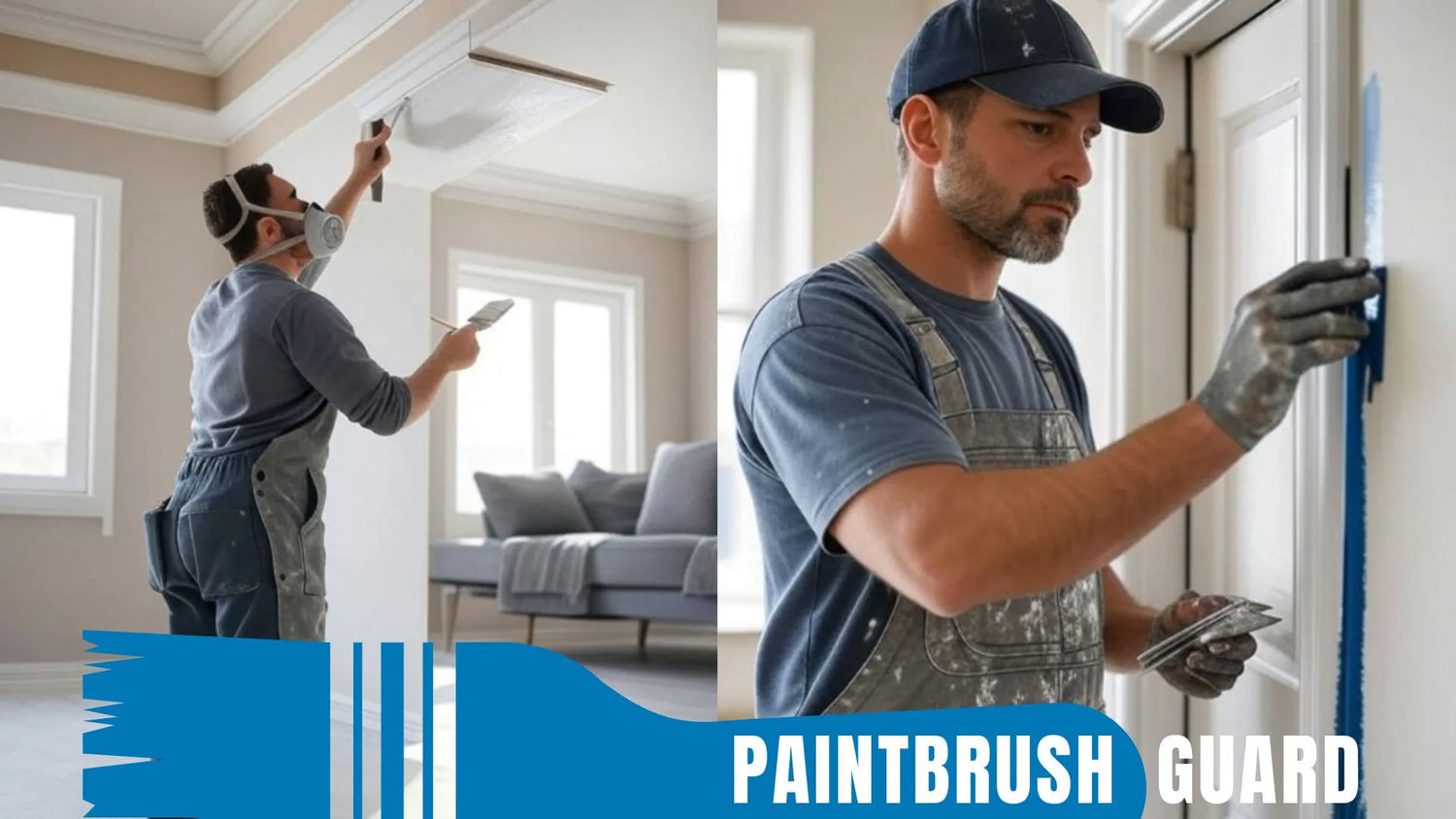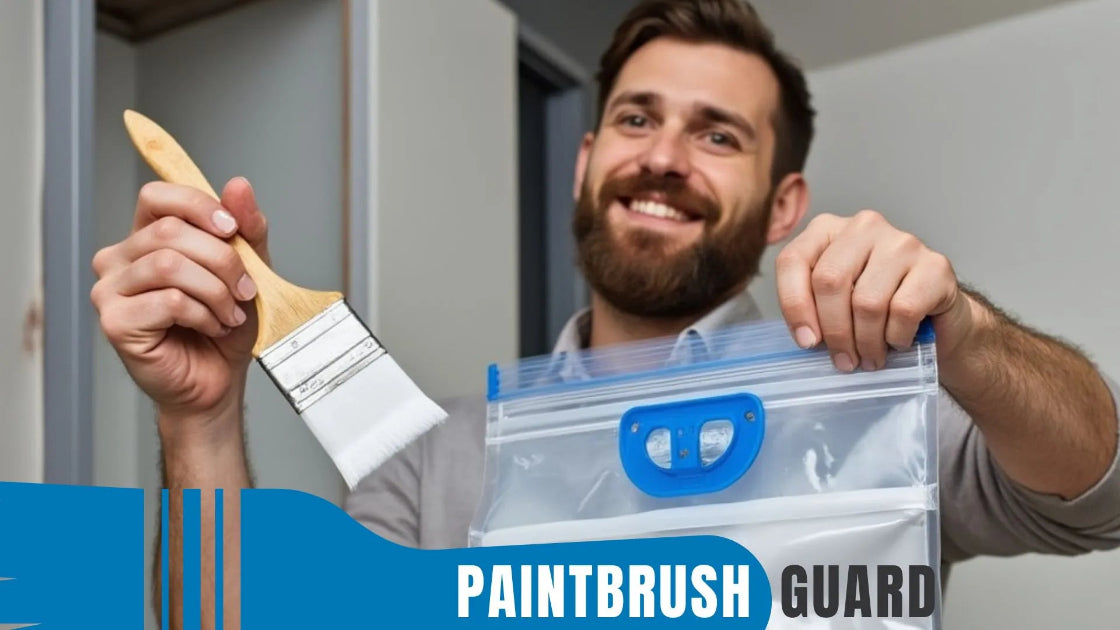
Ultimate guide for exterior concrete painting success
|
Time to read 12 min
|
Time to read 12 min
Exterior concrete painting is a powerful way to refresh patios, walkways, driveways, or foundation walls, enhancing curb appeal and protecting surfaces from weathering.
Proper preparation is critical for a durable, professional exterior concrete painting result, preventing issues like peeling, cracking, or uneven finishes.
This comprehensive guide dives deep into every aspect of preparing for exterior concrete painting, ensuring success for all painters.
In this exterior house painting guide you will learn how to prepare and paint all exterior surfaces step-by-step.
Concrete’s porous nature makes it prone to trapping moisture, dirt, and stains, which can sabotage exterior concrete painting if not addressed.
Thorough preparation ensures paint adheres properly, resists wear, and maintains a polished look, extending the surface’s lifespan.
Skipping prep can lead to costly touch-ups or paint failure, especially in high-traffic or exposed areas. Mastering these steps sets the foundation for a successful exterior concrete painting project.
Weather significantly impacts exterior concrete painting quality. Paint applied in extreme heat, cold, or humidity may bubble or peel. Aim for 50°F to 85°F with low humidity, ideally in spring or fall. Avoid rain or high winds, which disrupt drying or carry debris.
Check the 5-day forecast and paint early in the day to allow drying before evening dew. Smart timing ensures top exterior concrete painting results.
Use a weather app to track humidity and temperature. A hygrometer confirms low humidity, ideal for exterior concrete painting success.
This in-depth guide covers every aspect of preparing for exterior deck painting, from inspection to priming, ensuring your project succeeds.
Before starting exterior concrete painting, inspect the concrete thoroughly to identify issues. Check for cracks, spalling (flaking concrete), or uneven areas.
Look for efflorescence (white, powdery deposits), indicating moisture issues, and mildew or algae, common in shaded areas. Examine for old paint that’s peeling or chalking.
For surfaces painted before 1978, test for lead paint with a certified kit, as it requires special handling. A detailed inspection ensures effective exterior concrete painting by addressing problems upfront.
If lead paint is detected, follow EPA guidelines, using wet sanding and HEPA vacuums to minimize dust. Hiring a lead-safe certified contractor may be necessary for safe exterior concrete painting.
Persistent efflorescence or dampness suggests water infiltration. Address drainage issues or apply a waterproofing sealer before exterior concrete painting to prevent paint failure.
This in-depth guide explores every aspect of preparing for exterior door painting, from inspection to priming
Clean concrete is vital for exterior concrete painting to ensure paint adhesion. Dirt, grease, or mildew can cause peeling or uneven finishes. Start by sweeping away debris like leaves or dirt.
Use a pressure washer at 1,500-2,000 PSI with a 25-degree nozzle to remove grime, algae, and loose paint, keeping the wand at a 45-degree angle to avoid etching the concrete.
For stubborn stains or mildew, apply a concrete cleaner or a mix of one part bleach to three parts water, scrubbing with a stiff brush. Rinse thoroughly and allow 48-72 hours for drying, depending on weather. Thorough cleaning is non-negotiable for a smooth exterior concrete painting result.
For oil stains, use a degreaser or TSP solution, scrubbing vigorously and rinsing well to eliminate residue, ensuring a pristine surface for exterior concrete painting.
Mildew thrives in damp areas. After applying a cleaner, scrub affected spots and rinse thoroughly to prevent regrowth, preparing the concrete for exterior concrete painting.
This exterior metal painting guide helps you achieving a professional long lasting paint result, preventing issues like rust, peeling or uneven finishes.
Fixing damage is crucial for exterior concrete painting to achieve a uniform look and prevent water infiltration. Fill small cracks with concrete crack filler or acrylic masonry caulk, smoothing with a putty knife.
For larger cracks or spalling, use a concrete patching compound, matching the texture of the surrounding surface. Smooth repaired areas with a grinder or sandpaper once cured (typically 24-48 hours).
Ensure all repairs are flush to avoid visible seams. These repairs create a stable base, enhancing exterior concrete painting durability.
For significant damage, apply a patching compound in layers, allowing each to cure before adding more, ensuring a seamless surface for exterior concrete painting.
Etching opens concrete pores for better paint adhesion, a key step in exterior concrete painting, especially for smooth or previously sealed surfaces.
Apply a concrete etching solution (like DRYLOK Concrete and Masonry Liquid Etch & Clean) with a plastic watering can, spreading it evenly with a non-metal broom. Let it sit for 10-20 minutes, then scrub vigorously and rinse with a pressure washer.
The surface should feel like medium-grit sandpaper when dry. Etching removes efflorescence and prepares the concrete for exterior concrete painting.
After etching, test a small area with your hand to confirm a sandpaper-like texture, ensuring optimal paint bonding for exterior concrete painting.
This in depth guide covers every aspect from inspection to priming and brick painting for homeowners taking on a large house brick painting project.
Priming fills pores and ensures paint adhesion, a must for exterior concrete painting. Use a masonry or concrete bonding primer, like Behr’s Concrete and Masonry Bonding Primer or Loxon Concrete and Masonry Primer, applied with a ½-¾-inch nap roller or nylon-polyester brush.
Apply a thin, even coat, covering edges with a brush and larger areas with a roller. For previously painted concrete, apply two coats, allowing the first to dry fully (2-4 hours).
Let the primer cure for 8 hours before painting, but not longer than 30 days. Priming prevents peeling and enhances exterior concrete painting longevity.
New concrete requires 30-90 days to cure before priming. Use a block filler primer to seal pores, optimizing exterior concrete painting results.
Protecting adjacent surfaces simplifies cleanup during exterior concrete painting. Use painter’s tape to mask off siding, trim, or windows near the concrete. Cover plants, patios, or driveways with canvas drop cloths, which are durable and slip-resistant.
Trim back vegetation to prevent paint from sticking to leaves. Proper protection keeps your exterior concrete painting project tidy and efficient.
Apply tape in short sections, pressing firmly with a putty knife for a tight seal. Remove tape before paint dries to ensure clean lines for exterior concrete painting.
Safe access is key for exterior concrete painting, especially for elevated or large surfaces like foundation walls or driveways. Use a stable ladder for low areas or scaffolding for higher ones.
Wear safety gear like gloves, goggles, and a mask, particularly when pressure washing or etching. Ensure good lighting to spot imperfections. For expansive surfaces, consider professional help for safety. A secure setup enhances exterior concrete painting quality.
Use a respirator for etching or spraying and non-slip shoes on wet surfaces, ensuring a safe exterior concrete painting process.
Exterior concrete painting protects your concrete surfaces with proper prep. By inspecting, cleaning, repairing, etching, priming, protecting, and planning for weather and access, you ensure a professional exterior concrete painting finish.
These steps, tailored for concrete’s unique properties, set you up for success. Start your exterior concrete painting project today for a vibrant, long-lasting transformation.
With preparation complete, you’re ready to paint your exterior concrete surfaces for a durable, professional finish that enhances curb appeal and protects against wear.
Follow this step-by-step guide to ensure a flawless exterior concrete painting process from start to finish.
Selecting the appropriate paint is critical for exterior concrete painting durability and appearance.
Pro Tip: Check the paint’s label for application temperature (ideally 50°F to 85°F) and drying times to ensure optimal exterior concrete painting results. For wet climates, choose paints with mildew-resistant additives.
Having the right tools ensures efficiency and precision during exterior concrete painting.
With no cleanup required after a painting session, you can take a short break mid-project or wrap up your painting for the day, your brush stays ready without the need to clean.
Stir the paint thoroughly with a stir stick to ensure uniform color and consistency. For multiple cans, mix them in a 5-gallon bucket to avoid color variations, a common issue in exterior concrete painting.
Test the paint on a small, inconspicuous area (e.g., a corner of the patio or driveway) to confirm color, adhesion, and texture.
Let it dry fully to ensure it matches your vision and adheres well to the primed surface.
Begin painting with careful technique to achieve a smooth, durable exterior concrete painting finish.
Allow the first coat to dry fully, typically 4-6 hours for acrylic latex paints or 12-24 hours for epoxy paints, per the manufacturer’s instructions. Check for tackiness before proceeding.
After the first coat dries, inspect the surface for missed spots, drips, or uneven texture. For minor imperfections, lightly sand with 220-grit sandpaper to smooth the surface. Wipe away dust with a tack cloth or damp rag to ensure a clean base for the second coat.
This step is crucial for high-traffic areas like walkways or driveways, where a smooth exterior concrete painting finish enhances durability and appearance.
A second coat ensures a uniform color, added protection, and enhanced durability for your exterior concrete painting project.
Allow the second coat to dry for at least 24-48 hours, or longer for epoxy paints or in humid conditions, to ensure a fully cured, durable finish.
Avoid foot traffic or heavy use for 72 hours (or as specified by the paint manufacturer).
This guide tackles the top 20 questions about storing paintbrushes, from quick breaks to long-term care, and even challenges like humid coastal areas.
For high-traffic areas like patios, walkways, or steps, consider mixing a non-slip additive (like silica sand or polymer grit) into the second coat of paint to improve traction, especially in wet conditions.
Follow the manufacturer’s instructions for mixing ratios, typically 1 pound of additive per gallon of paint.
Alternatively, apply a clear non-slip sealer over the dried paint for added safety without altering the color. This step enhances the functionality of your exterior concrete painting project.
Once the paint is fully dry, carefully remove painter’s tape at a 45-degree angle to avoid lifting the paint. Fold up canvas drop cloths and clean tools immediately, use soap and water for latex paints or mineral spirits for epoxy paints.
Inspect the painted surface for any touch-ups needed, using a small brush for minor fixes.
Store leftover paint in a sealed, labeled container (noting the date and area painted) for future touch-ups. Keep containers in a cool, dry place away from freezing temperatures.
Regular maintenance extends the life of your exterior concrete painting project.
By following these steps, selecting the right paint, gathering tools, applying careful coats, adding safety features, and maintaining the finish, you’ll achieve a professional-grade exterior concrete painting result that transforms patios, walkways, or driveways while protecting them from the elements.
Combined with the thorough preparation outlined earlier, these steps ensure a durable, stunning outcome tailored to concrete’s unique properties.
Preparation is essential for exterior concrete painting because concrete’s porous nature traps moisture, dirt, and stains, which can cause peeling or uneven finishes if not addressed. Thorough prep, including cleaning, repairing, etching, and priming, ensures proper paint adhesion, durability, and a professional look, preventing costly touch-ups.
Inspect for cracks, spalling, efflorescence, mildew, or lead paint (pre-1978 surfaces). Clean with a pressure washer (1,500–2,000 PSI, 25-degree nozzle) or scrub with a bleach-water solution (1:3) for mildew, rinse thoroughly, and dry for 48–72 hours to ensure a clean, adhesive surface for exterior concrete painting.
Fill small cracks with concrete crack filler or caulk, and use patching compound for larger damage, smoothing with a grinder or sandpaper after curing (24–48 hours). Etch smooth surfaces with a concrete etching solution, scrub, rinse, and confirm a sandpaper-like texture to enhance paint adhesion for exterior concrete painting.
Priming seals concrete pores, enhances paint adhesion, and prevents peeling, especially for new or smooth surfaces. Use a masonry or concrete bonding primer, apply a thin coat with a ½–¾-inch nap roller or brush, and let it cure for 8 hours (up to 30 days) to ensure a durable exterior concrete painting foundation.
Paint in 50–85°F with low humidity, ideally in spring or fall, to avoid bubbling or peeling, checking a 5-day forecast. Use stable ladders or scaffolding, wear gloves, goggles, a respirator, and non-slip shoes, and protect areas with tape and canvas drop cloths to ensure a safe, high-quality exterior concrete painting process.

Learn about eco-friendly painting, tips and tutorials on house interior and exterior surfaces, so you can get started with your project without any surprices during or after your painting.

Learn how interior house paint colors influence mood with expert tips on room preference so you can pick the best colors for a harmonious home environment.
We focus on the most popular shades for each interior colors, so you don't miss no matter what color you pick.

Learn how this innovative tool allows you to store paintbrushes without the need for immediate cleaning, offering significant advantages in time savings, water conservation, reduced chemical pollution, and lower costs for supplies.
